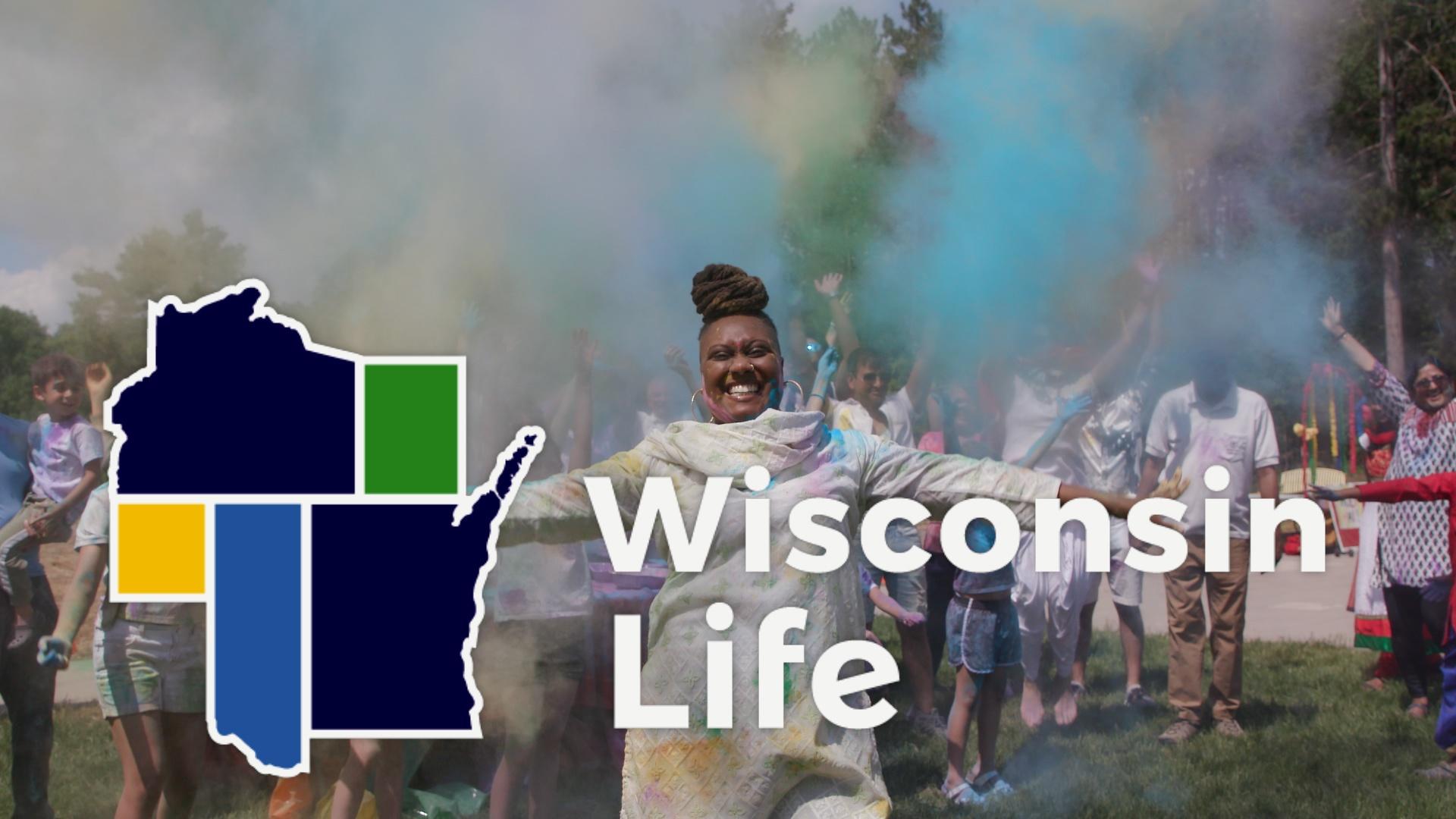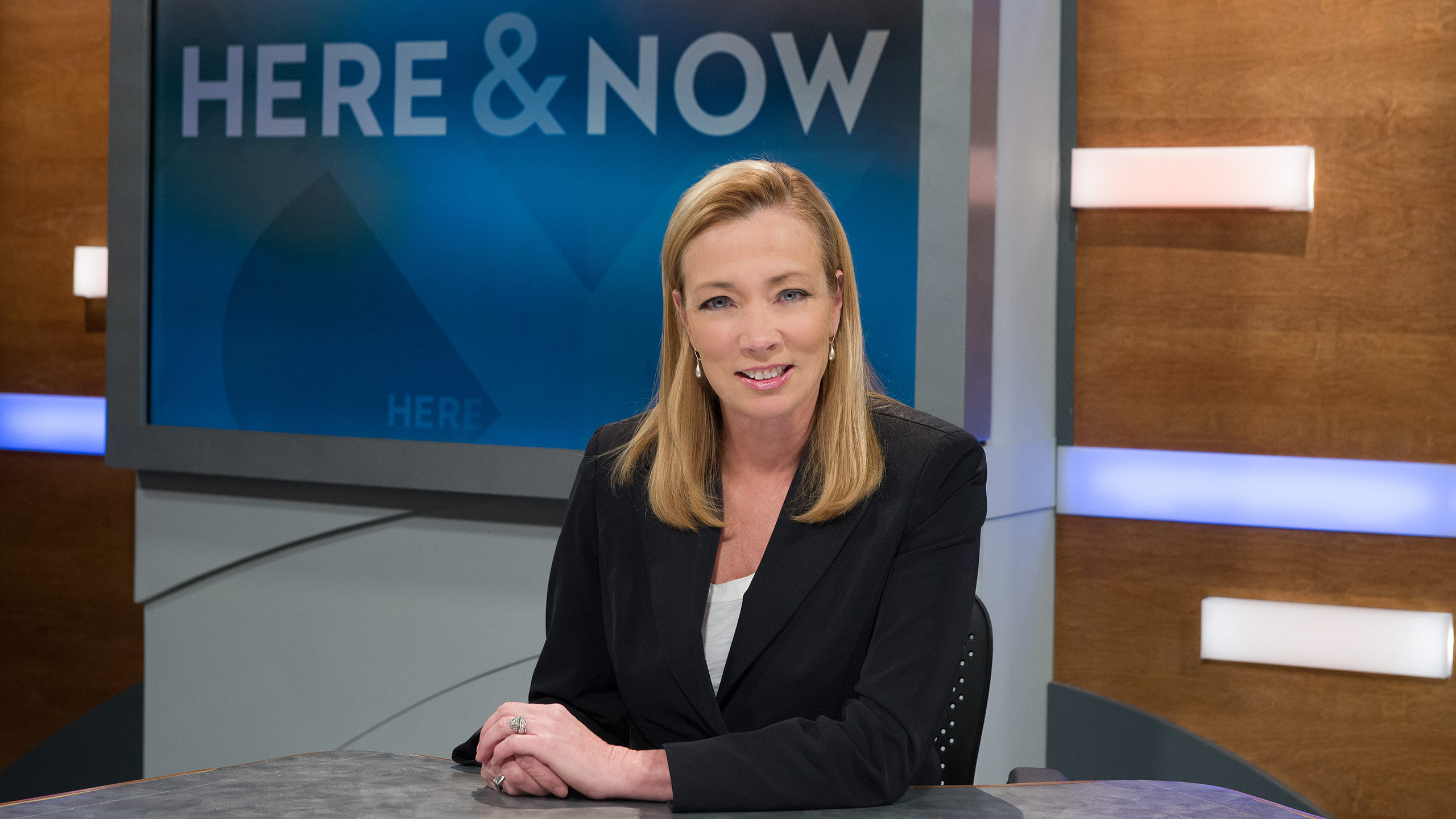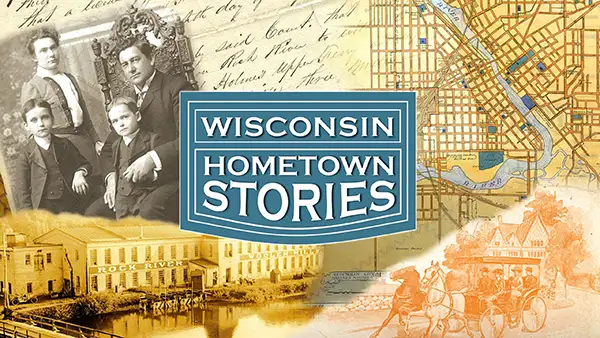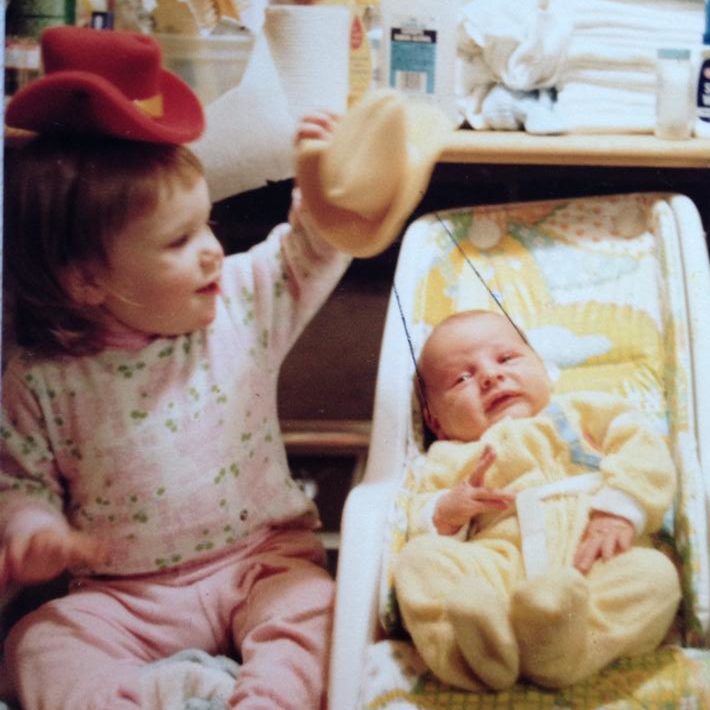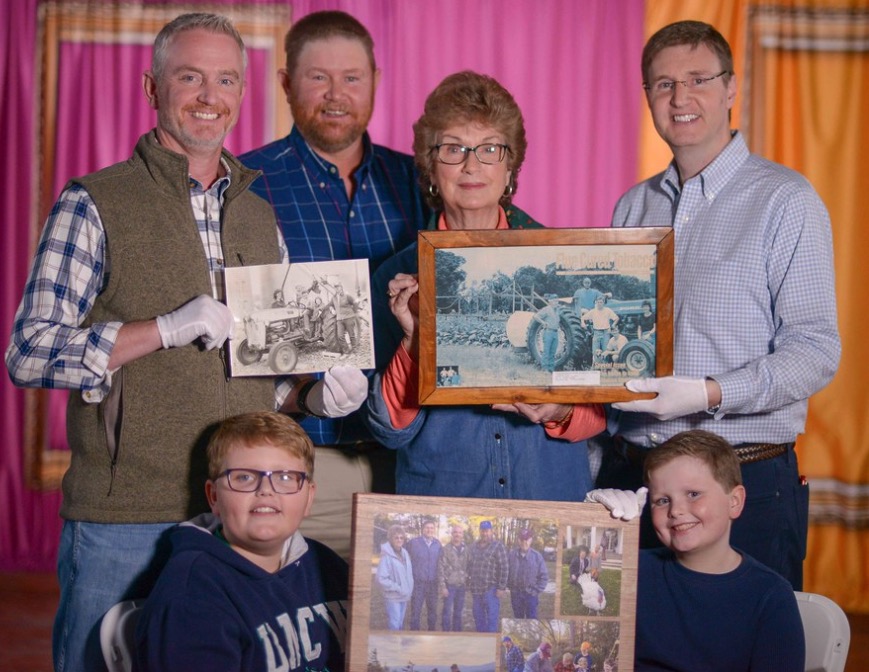Q&A: Thomas Allen Harris, Family Pictures USA
July 12, 2019 Leave a Comment
We know our family history through the images we retain: albums, videos, memories. What kind of story do these images tell when we look at the bigger picture?
Premiering Aug. 12 and 13 on PBS, the three-part series Family Pictures USA explores American communities through the lens of family photo albums, unearthing rich personal stories that expand our understanding.
Host, director and executive producer Thomas Allen Harris spoke with Wisconsin Public Television to share some of his reflections. Read on for more!
WISCONSIN PUBLIC TELEVISION: What are some of your own memories of family photos?
THOMAS ALLEN HARRIS: As a kid, family photos seemed like totems looking down on us. I knew we were related, but as I grew older, the stories around the images would change. It was eternal mystery; it never got boring or tiring.
My grandfather Albert S. Johnson, Jr. and I were a perfect match. He was an amazing storyteller and photographer. I ended up posing for him, as did everyone in the family.
I had some trauma in my life. I moved to East Africa and back with my family; I tried to fit back in as an American and realized that I’m an African-American in a country that doesn’t love me back. Against the backdrop of history I learned at school, I gained an awareness of how my grandparents moved from the north and south to Harlem. My grandfather’s storytelling anchored who I am.
Same thing with my stepdad’s family: he was in exile from South Africa for 30 years; our relationship was mediated by apartheid. Photos allowed us to keep in touch with relatives that we couldn’t see in person.
These men raised me as a storyteller and a filmmaker. Ultimately, their stories and my stories have become the basis for my entire career.
WPT: How has your previous work led you to this point?
TAH: I’ve been making nonfiction films for the last 25 years. They’re very personal, but they also mine larger issues of migration, identity and family.
My late stepdad, B. Pule Leinaeng, left South Africa in 1960 to heed Nelson Mandela’s call to build a global antiapartheid movement. When he died, I took his family album and photographic archives back to South Africa, reintroducing his story to people who didn’t know it. Out of that came my film Twelve Disciples of Nelson Mandela. [Learn more here.]
That was the first time I got a chance to see how family albums could reconnect people with history that deeply affected them, even though they were unfamiliar with it. Our tools helped communities share how stories had affected them – and the larger culture.
Q: Can you talk a bit about the Digital Diaspora Family Reunion? How did it begin?
A: As I traveled around the world with my films, particularly Twelve Disciples, people would invariably say, “I want to do something so my family archives don’t sit inert on a bookshelf. Can you help us create a tool to do something similar?”
Initially, we got a grant from the Bay Area Video Coalition (BAVC), and developed a prototype, continuing to give people tools. People asked if we could do a live version; that became the touring DDFR roadshow.
Most people are used to showing pictures to family members and close friends. With DDFR, we provided a context in which people show intimate family photos to complete strangers in what we call Community Photo Shares; they bring images and share stories behind them. Then, we come together for a live grand finale to share discoveries with the community. This process allows people and communities to embark on their own journeys of discovery through individual and collective archives – which have resulted in exhibitions, films, art projects, books, etc.
We’ve worked with partners such as libraries, Project Home, people who are differently abled, film festivals such as the AFI Festival. In Brooklyn, an organization called Healthy Families brought us to do a roadshow in public housing. To date, we’ve done these Community Photo Shares in over 60 cities across the country. We’ve recorded thousands of people speaking about their photographs. In the process, we created our own archive, which has grown to over 50,000 images.
The Digital Diaspora project really affected the documentary I was working on at the time – Through a Lens Darkly: Black Photographers and the Emergence of a People. It helped us move beyond looking at the accomplishments of Black photographers to ask, “What do African-Americans look like in the national American family album?”
African-American family albums held many uplifting images, but much of the historic representation in American mainstream culture has involved constant battle with the predominance of derogatory images. I began to understand the power of the family album in providing what Howard Zinn refers to as a “people’s history” of family and community.
From the beginning, we’ve encouraged people of all backgrounds to share photos. Most Americans come from someplace else, or were affected by larger movements – the Great Migration, Europe, South and Central America. Photos helped keep the family story intact across time and space.
Family Pictures USA came out of this as a way to unite people with their family photographs and unite communities, across differences, to share their commonalities.
WPT: How did you choose the areas featured in Family Pictures USA: North Carolina, Detroit and Southwest Florida?

In Detroit, Thomas Allen Harris meets Paul Wasserman, the owner of America’s oldest hat retailer: Henry the Hatter.
TAH: In the process of developing the series, we got a grant from the Ford Foundation to go to Detroit. We were already working with the Detroit Historical Society and partnered with about 15 local partners to do roadshows.
Then the Corporation for Public Broadcasting (CPB) got involved. At that time, they were interested in rural-facing material. We were already in dialogue with Public Media North Carolina (UNC-TV) and South Carolina Educational Television (SCETV), among others. Then one of our producing partners moved to WGCU in southwest Florida, so we brought it there.
Many local stations might be cash-strapped, but have amazing wealth in terms of relationships to local communities. Together, we were able to access funding that we might not have gotten otherwise. We’re creating a model for public media, passing an untapped resource so stations can strengthen themselves, do production and get a national presence.
WPT: What were some of the most important things you wanted this program to show?
TAH: We want people to, first, see the country in a way it hasn’t necessarily seen itself before. We all have families. In some ways, it’s the great equalizer. When you’re taking a picture of a family member, you’re doing it with love.
To quote the writer Natalie Goldberg: “Our lives are at once ordinary and mythical.” Countries are not built by celebrities, but common people who make the decision to cross the ocean, to survive, to pick up and leave their home within 24 hours.
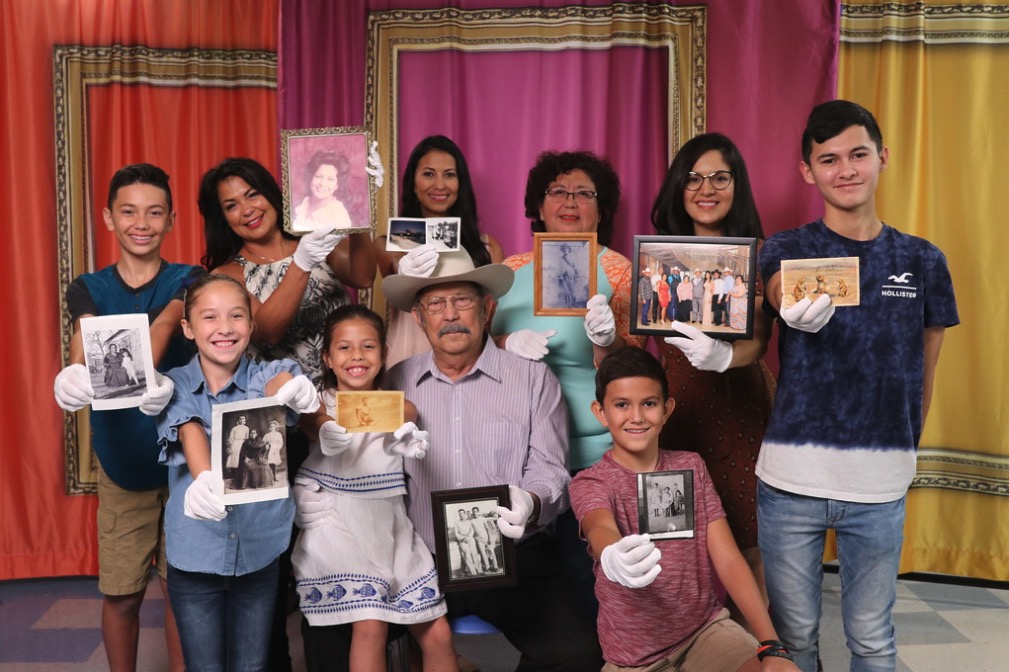
At the Collier County Boys & Girls Club in Immokalee, Fla., a multigenerational family poses proudly with old and new photos at a Community Photo Share.
Look at the fortitude of ordinary families – the amazing strength of women, whose stories get short shrift.
Also, we want to celebrate regional differences across the country. Understand the album as folk art: the way they were compiled, the stories passed down, the different interpretations.
Through the photo album, everyone gets a place at the table.
WPT: What took extra time and thought to bring to life?
TAH: Our flexible format involves both the Community Photo Sharing as well as Deep Dives (following select people to their homes, communities and places of work). Our challenge was to integrate “deep dives” with the “chorus” of Community Photo Sharing in a coherent story.
It was also a big challenge for me to step in as an on-camera host and find my authentic voice on camera – as well as communicate my vision as director.
We also had to figure out how to allow the character of the place to emerge that isn’t pedantic but rooted in the family album. Mixing stories with visual literacy.
WPT: Can you give an example of how participants have seen familiar pictures in different ways?
TAH: I did a TED Talk, “Why Family Photographs Matter,” and mentioned how people come to us thinking they’re going to share one story, but the heart opens when they speak. The heart has its own story.
In Florida, we met one person raised in the city, and another raised in the country. They both recalled going out with the same great-uncle who took them out to cut down swamp cabbage. But they had never met!
One person saw an image of a dead brother. Until they counted the number of candles on his birthday cake, they didn’t realize how old he was in the photo.
We interviewed someone in rural North Carolina whose great-grandmother was one of the architects of Mother’s Day. This came out through her mother’s family album.
A lot of it has to do with visual literacy, meshing private family photographs with the public archive. Who was in the White House at the time? How close were we to a war? What was going on within the culture at the time – women’s rights, the civil rights movement, the economy?
When they come together as a composite, you really get a sense of the history of a particular area.
WPT: What are some of the most memorable moments you encountered?
TAH: One young woman, the principal of an elementary school, came in for the Community Photo Share. She was the youngest of six or seven children from a family of Mexican migrant pickers. She and her next-oldest brother were the only ones in their family to go to college.
She started crying, discussing the sacrifices her family made to prioritize their education. They were able to build their own business and work for themselves so the kids could stay in school.
The Edward R. Murrow documentary Harvest of Shame was filmed in that area in the 1950s. In it, Murrow says there’s never been a case of a migrant worker whose kids have gone to college. Now, she’s become a teacher and a principal where more than 80% of the students are kids of people who pick in fields for a living – who feed America.
On a lighter note, it’s always funny to see sibling rivalries and their contradictory interpretations of photos or events… I made a film about siblings, so I’m always attuned to that. [laughs]
WPT: Do you see a lot of younger people taking part?
TAH: Older people have the photos and the stories; they’re the guardians. Younger people are more digitally native, but equally compelled.
We saw that a lot: people coming with family or community elders. We also saw lots of people coming with their kids, who were happy to be involved in a family project. It provided excuses for everyone to go through family photos together and embark on journeys of discovery.
It’s also been very rewarding to see “family” defined in different ways. Certain people are much more accepted in extended families of choice. Other families have known each other “like family” for generations.
WPT: How can visual artifacts encourage reconciliation, even when grappling with difficult issues?
TAH: We don’t shy away from difficult issues, but we don’t come at them in a way that’s exploitative. We’re coming from a place of empathy.
In Detroit, reconciliation happened between siblings; in North Carolina we took the poet laureate of North Carolina, Jaki Shelton Green, back to the plantation that owned her ancestors.

Twelve miles south of Immokalee, Florida, cowboy Clint Raulerson takes host Thomas Allen Harris through his family album on the ranch his family has worked on for three generations.
In Florida, photo albums depicted the population boom as it happened, but the boom has also led to red tides and environmental crises for the Everglades, water sources and our responsibilities from one generation to the next. Reconciliation happened around the environment.
Digital and virtual spaces have the promise of bringing people together, but they’ve also bifurcated people. This gives us another commonality, maybe allowing a mini truth in reconciliation – with families, within communities, within states and the country. This could conceivably affect our nation – at a time when we need to be grounded in who we are.
WPT: Any final thoughts you’d like to add?
TAH: The different places, communities, issues that come together in this project are larger than the sum of the parts. That’s discovery of who we are, individually and collectively. The creativity that comes out of that, the way this project is so generative… It’s so deeply gratifying.
We’re seeing similar things in genealogy: people getting tested and discovering connections with communities they never thought they’d be connected with. And there’s a lot of crossover: people who are history buffs, artists making change…
In 1991, I got my first video camera and interviewed my grandpa. My mom, Rudean Leinaeng, joined me; recently, she decided to turn that interview into a book of historical fiction entitled Coal, War & Love. My great-grandfather went to Europe in World War I; my great-grandmother stayed during the 1919 flu epidemic. They fought two kinds of wars.
My mom is a retired chemistry professor; she’s never written fiction or narrative. All of a sudden, she’s about to be a published author.
When you take the effort to find and record stories behind some of these images, it’s similar to the kind of community wealth I talked about with public television.
It’s like buried treasure. You dig it up.
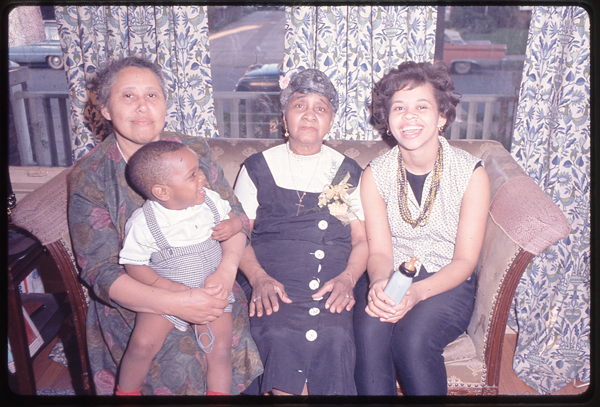
Baby Thomas sits on his grandmother Joella’s lap, with his mother Rudean (right), and his great-grandmother Evelyn (center).
Visit Family Pictures USA online:
Web | Facebook | Instagram
Interview conducted and edited by
Susannah Brooks
(pictured with newborn brother Tim)
 Passport
Passport